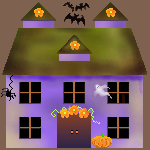 A depiction of St. Piran in a stained glass window in Truro Cathedral. The window was donated by a benefactor in 1907...
A depiction of St. Piran in a stained glass window in Truro Cathedral. The window was donated by a benefactor in 1907... Dunes at Penhale Sands and Perran Beach
Dunes at Penhale Sands and Perran Beach
Once here St. Piran was joined by many of his Christian converts and together they founded the Abbey of Lanpiran, with St. Piran becoming abbot... Cathedral Church of Saint Peter, Exeter
Cathedral Church of Saint Peter, Exeter
It is said that at his death the remains of the Blessed Martin the Abbot, which he had brought from Ireland, were buried with him at Perranzabuloe. However His own remains were subsequently exhumed and redistributed to be venerated in various places, Exeter Cathedral for one... Remains of St Piran's Old Church
Remains of St Piran's Old Church
Situated in a hollow in the sand dunes of Penhale Sands and Perran Beach is the site of the original building of St. Piran’s Oratory. It was probably built of wattle and daub and is thought to be the oldest Christian site in Cornwall. The Oratory was abandoned in the tenth century due to the encroachment of sand. At a later date a replacement church was built of stone further inland but was abandoned in 1795. The Old Church churchyard however was still used for burials until 1835 before the sand enveloped it... The Survey of Cornwall by Richard Carew
The Survey of Cornwall by Richard Carew
The noted 17th century antiquary, Richard Carew 1555 -1620, wrote:
‘St Piran too well brooketh his name in Sabuloe: for the sand carried up by the north wind from the seashore daily continueth covering and marring the land adjoinant, so as the distress of this deluge drove the inhabitants to remove their church. Howbeit when it meeteth with any crossing brook, the same (by a secret apathy) restraineth and barreth his farther encroaching that way. It was in consequence of this notion that the inhabitants, thinking such situation secure, removed their church only about 300 yards, it being on the opposite side of the brook'.... Building covering the partly excavated St Piran's Oratory in 1952
Building covering the partly excavated St Piran's Oratory in 1952
The oratory site was excavated in 1910 but the remains of the stone building were once again buried in the sand. The site of St Piran's Old Church and the 10th century cross next to it was excavated in 1919.... Perranzabuloe parish church, St. Piran
Perranzabuloe parish church, St. Piran
The old church was partially dismantled and the materials used to build a new church further inland. It was dedicated to St. Piran in July 1805... St. Piran Cornish Flag
St. Piran Cornish Flag
Many events will take place throughout cornwall today with the St. Piran flag (Baner Peran) flying proudly across the county. The flag is used by Cornish people as a symbol of identity... St. Piran's Cross
St. Piran's Cross
The largest event will take place in Perranzabuloe where thousands of people will march across the dunes to St. Piran’s Cross. People are generally dressed in black, white and gold and carrying the St. Piran flag. Daffodils are also carried and placed at the cross. A play, in Cornish, of the Life of St. Piran will also be enacted at this event....
Places, sites and holy wells have been named after St. Piran, with churches at Perranzabuloe and Perranarworthal dedicated to him... Mount St. Piran in Banff National Park near Lake Louise, Alberta, Canada. It was named in 1894 by Samual E.S. Allen after St. Piran...
Mount St. Piran in Banff National Park near Lake Louise, Alberta, Canada. It was named in 1894 by Samual E.S. Allen after St. Piran...
Hope you all enjoyed your day....
Until next time, take care...Hugs Chrissy xx
























0 comments:
Post a Comment